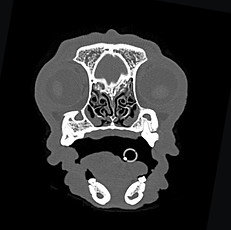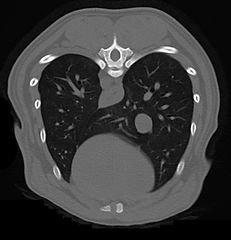COMPUTED TOMOGRAPHY (CT)
What is a CT scan?
CT is an imaging techinique used to examine the organs, limbs or body cavities. A CT machine contains a rotating head which circles the patient whilst emitting x-rays. This creates a 3D image throughout the body by taking a continuous picture in tiny slices (often only a few millimetres thick). This gives significantly more information than a 2D image, such as from an x-ray, as each organ can be individually identified. It is also easier to assess where structures are sitting in relation to each other and how they are attached.
What are CT scans used for?
CT scans are good at examing most tissues including:
-
The nasal cavity
-
The inner ear
-
The lungs
-
The abdominal organs
-
The limbs
CT is not as good at examining the brain, spinal cord and nerves - MRI (magnetic resonance imaging) is better for these tissues.
Due to the thin slices of x-rays it takes, CT scans are much more sensitive for detecing very small changes. This is most relevant in cancer diagnosis, where we often wish to screen for spread (known as metastais) in the lungs or other organs. CT will detect much smaller abnormalities than is possible on an x-ray.





